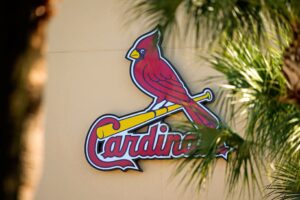The 1910s saw the Dead Ball Era begin to fade. As the balls became less scuffed and doctored, they began to fly farther. By the end of the decade, a superstar named Babe Ruth emerged. The time also saw the banning of “syndicate baseball.” Up until that point, owners could invest in more than one team. But at the beginning of 1910, the two leagues drew up a plan to prohibit the practice. A third Major League, the Federal League, also popped up. However, it only lasted for two seasons (1914 and 1915).
For the franchise in Boston, times were tough. The previous decade had decimated the hopes of many fans. The Doves finished last in attendance in 1909 and did so again in 1910. This was something of a seesaw decade. It began with low morale, accelerated to a world championship, and then wound down again. But, it was an important decade in franchise history. They became known as the Braves and enjoyed two of their best seasons.
The Miserable Beginning
However, it did not begin this way. 1910, ’11, and ’12 were dreadful campaigns. Fred Lake was called upon to manage the Doves in 1910. The team finished 53-100. Both the pitching and offense struggled. They batted a dismal .247 and pitched to a 3.22 ERA, both good for seventh in the league. Their OPS+ and ERA+ were 79 and 102, respectively. Outfielder Doc Miller led the offense with a .286 average. Lefty Al Mattern led the team with 16 wins. He also led the league with six shutouts. His ERA was 2.98. Unfortunately, he also lost 19 games and struck out 94 in 305 innings.
Thus Lake’s time in Boston came to an end. Former manager Fred Tenney returned to lead the newly named Boston Rustlers. They went 44-107 under his leadership in 1911. The issue was not with the offense. They led the league in hits (1,417), doubles (249), and placed second in average (.267). The pitching, however, was abysmal. A 5.08 team ERA planted them last in the league. They gave up over 1,000 runs and 1,500 hits, posting a 1.632 WHIP. Their strikeout total was horrid (486 in 1,374 innings). They even brought in 44-year-old Cy Young to help. He did post a better winning percentage in 11 games than the other starters. But, sadly, the Rustlers did not have a 10-game winner that year.
A New Name
In 1912, the Rustlers became the Braves. New manager Johnny Kling guided them to a 52-101 mark in his first and only season. Second baseman Bill Sweeney helped lead the offense, hitting .344 with a 135 OPS+ in 153 games. Outfielder John Titus was another leader, hitting .325 with a 137 OPS+ in 96 games. But, once again, the pitching was the issue. While the team ERA did improve to 4.17, it was still last in the league. They gave up the most hits (1,544), runs (871), earned runs (644), and home runs (43). The Braves had three double-digit winners. Right-hander Hub Perdue led the team with 13 victories. However, nobody finished above .500.
In the offseason, a crucial decision was made. Kling was ousted as manager, and George Stallings was brought in. His first season was not anything to write home about. However, the team did snap a string of four consecutive 100 loss seasons. They went 69-82 in 1913. Even though the offense dipped, the pitching improved significantly. Their ERA was lowered by a run. They also gave up fewer runs and fewer homers. So, while 1913 might not have been impressive, a glimmer of hope was beginning to form.
1914: The Miraculous Team
1914. The year of the miracle. The Boston Braves finally won their first modern World Series. It began with staunch pitching. A team that boasted no 10-game winners just three years prior now had two 20-game winners. Right-handers Dick Rudolph and Bill James led the team. Rudolph went 26-10 with a 2.35 ERA and a 121 ERA+. James posted a 26-7 record, a sparkling 1.90 ERA, and a 150 ERA+. All of this helped stabilize a relatively lackluster offense, sparking the Braves to their first pennant since 1898. The long wait was over, and Boston was back in the championship series. They shocked the world by sweeping the dreaded Philadelphia Athletics. Rudolph and James combined for 24 strikeouts in 39 innings. James posted an ERA of 0.00.
A Snowball Forms
Unfortunately, that would be the high point of the decade. Stallings guided the team to a second-place finish in 1915 and third in 1916. In fact, their record of 89-63 in ’16 bested their 83-69 mark from ’15. But after that, it was all downhill. The final years of the 1910s were marked with more misery. 1917 began the streak as the pitching fell to the middle of the pack. The bone dry offense could not keep up, finishing near the bottom of the league. In short, the franchise had returned to the depths of depravity. Their 72-81 mark was good for sixth.
The next season saw even more abysmal performances as the team finished 53-71. The once-promising Rudolph fell to nine wins. The team ERA of 2.90 was fifth in the league. They posted an ERA+ of 93. However, a bright spot shone at the top of the rotation. Southpaw Art Nehf led the team with 15 wins, 28 complete games, and 96 strikeouts. Unfortunately, the offense continued to struggle. They finished last in hits (1,014), total bases (1,278), and slugging (.307). Their team average of .244 landed them sixth.
The Final Year
In 1919, the team improved to 57-82. The offense continued humming along in mediocre fashion. Their average did improve to .253, and their OPS+ went from 91 to 96. However, they could not break free from the middle of the pack. They placed fourth in hits (1,201), sixth in doubles (142), and fifth in triples (62). Once again, the pitching only had one double-digit winner. It was Rudolph, who went 13-18, posting a team-best 2.18 ERA and a 129 ERA+. The team ERA was 3.17, placing them sixth. In short, the Braves got used to being sixth in just about everything. That included the standings, where they fell 38.5 games behind the pennant-winning Cincinnati Reds.
Main Photo:
Embed from Getty Images






